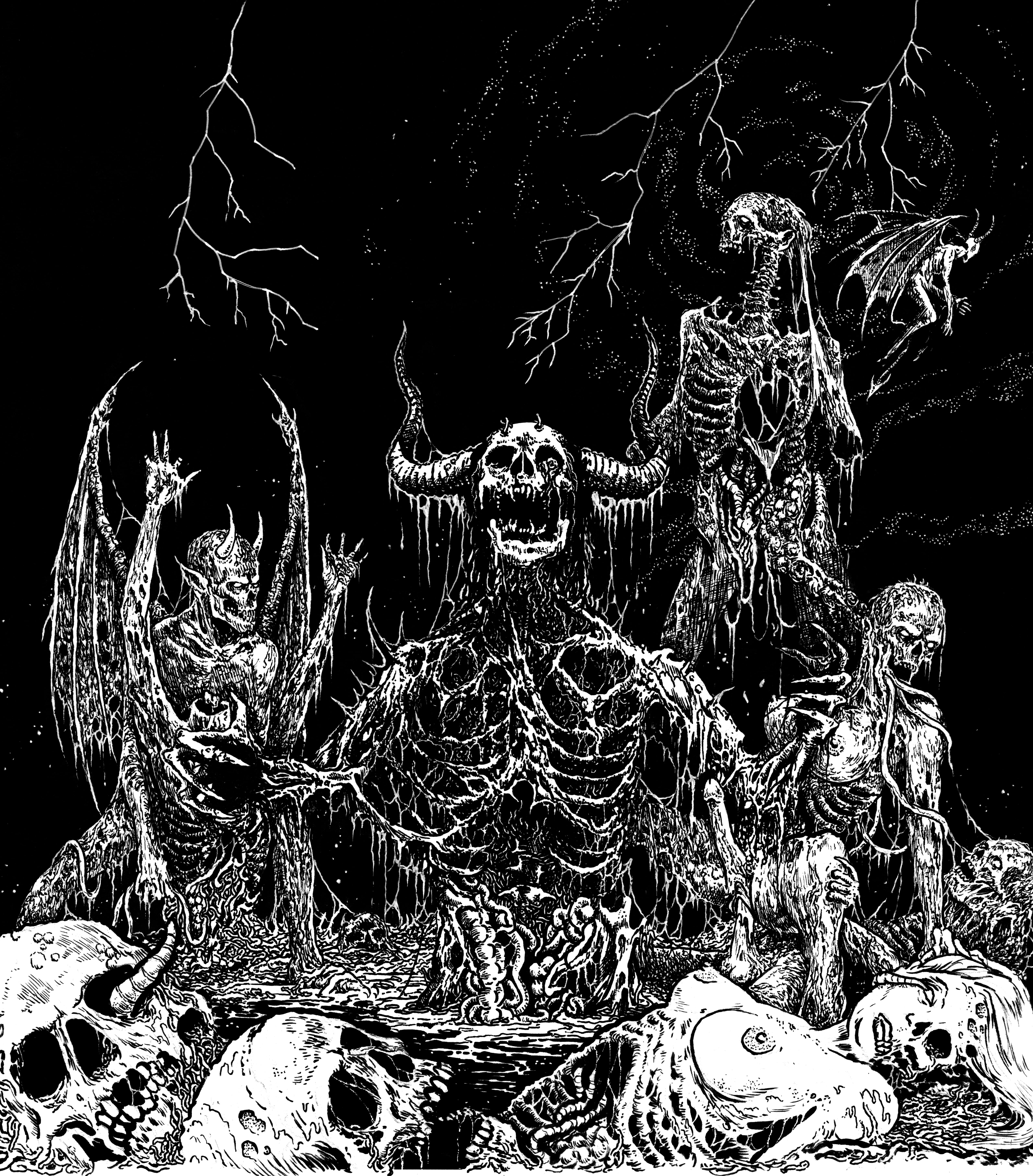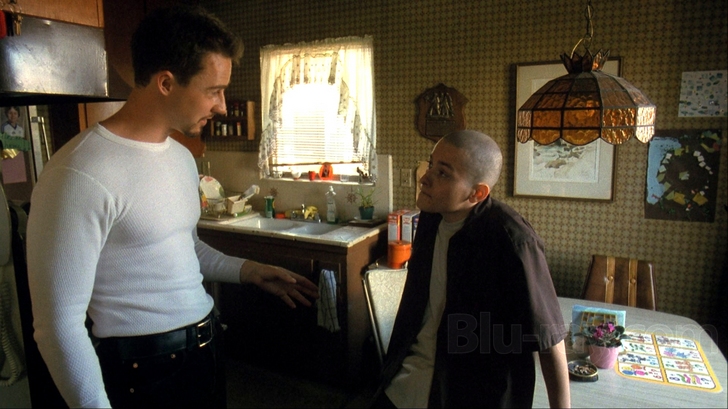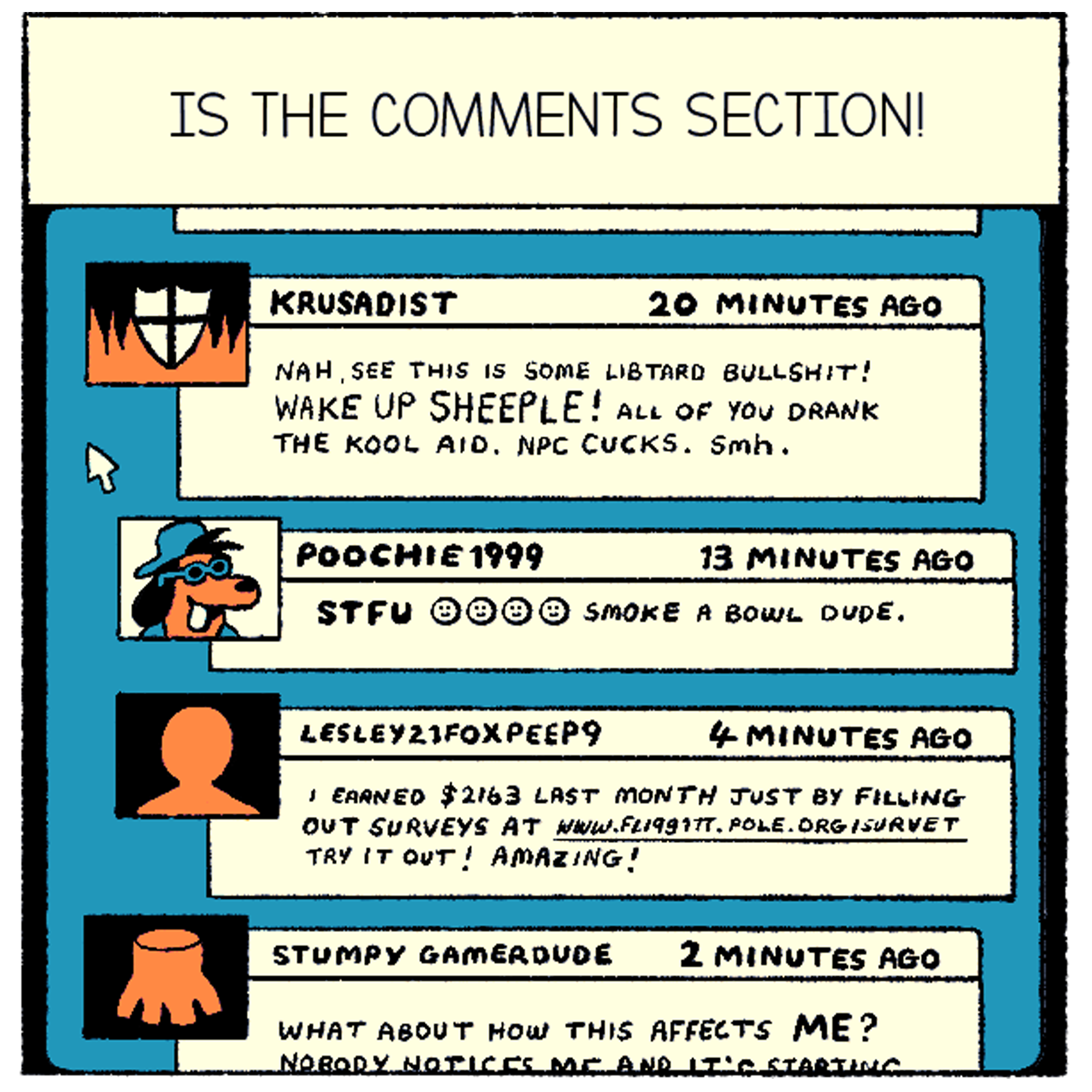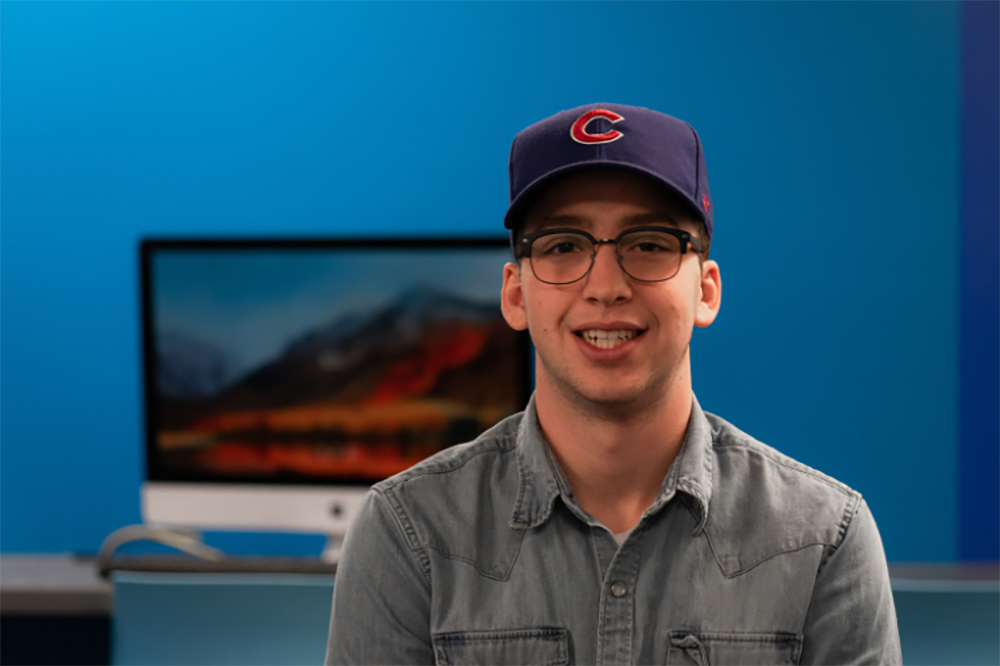This article originally appeared on VICE Canada.
As a professional wild food forager, I have, on more than one occasion, sung Janis Joplin’s “Mercedes Benz” to a grizzly bear so he would know where I was while I made a hasty-but-calm-oh-God-please-don’t-eat me escape. I once accidentally hit a grouse with my pickup truck on my way back to camp from a town run and turned it into the most fabulous wild morel and grouse risotto. I have even (quite accidentally) taken a piss on a porcupine in the dark.
(Dear porcupine, if you’re reading this, I continue to be eternally sorry for that error, please forgive me).
I’m just saying, without trying to brag, my choice of profession has afforded me a general level of badassery, adventure, and horrific mosquito bites most people don’t experience in their day-to-day lives.
It also lets me see a dark side of humanity that most people would probably rather do without.
As a tree planter or mushroom picker you work in the most isolated place—the bush. It’s often hard to get in and out of, requiring driving long distances on scarcely-used highways or down logging roads, boating up river or flying in. In many places, there is no cell phone service and no access to internet, police, or emergency services except for what is provided by your employer (if you even have an official employer). This is an environment which, while full of amazing people to meet, is often rife with a powerfully engrained, male-dominated long-standing patriarchy. Men often outnumber everyone else by seven, eight, sometimes even ten-to-one. I often refer to it as “man land” because the idea of the big, burly man who only needs a .45, a pack of cigarettes, and a woman to make him pancakes in the morning is not only ubiquitous but idolized.
Some people—mostly men—might disagree with me; that’s just how men and women are, they might say, you have to expect men to look at you and try to fuck you when you’re out there. To be fair, I have met some really awesome men I feel entirely safe within the bush, whether we’re hiking up a mountain or skinny dipping in a hot spring. However, I’ve seen too much shit to take their good behavior for granted.
On my second year in the bush, I saw a man sell his intoxicated wife to another man for a flat of Old Milwaukee beer. I don’t know if she had consented to anything of this nature beforehand, but she was certainly too drunk to consent to anything when she went into the trailer with the man. The man was a friend of mine, a fellow picker who was well-liked by many men of the camp; I saw the woman go in with him, but I didn’t understand at the time what had actually happened. The next day, one of the other men was laughing about it with him, as if this was a totally normal thing; it wasn’t until several weeks later that I actually understood he had fucked that half-conscious woman while her husband sat outside on a stump and pounded back the beers. I was never able to look at him the same after that and I was never able to look at the other men the same either because business just went on as per usual, as if he hadn’t done something disgusting and horrible and wrong.
So trust me—this shit is happening and it’s especially powerful in the bush because it is happening away from the eyes of the rest of the “normal” world.
Below are five tales from fellow picker, planter, and outfitter women about their experiences with misogyny and sexism in the field.
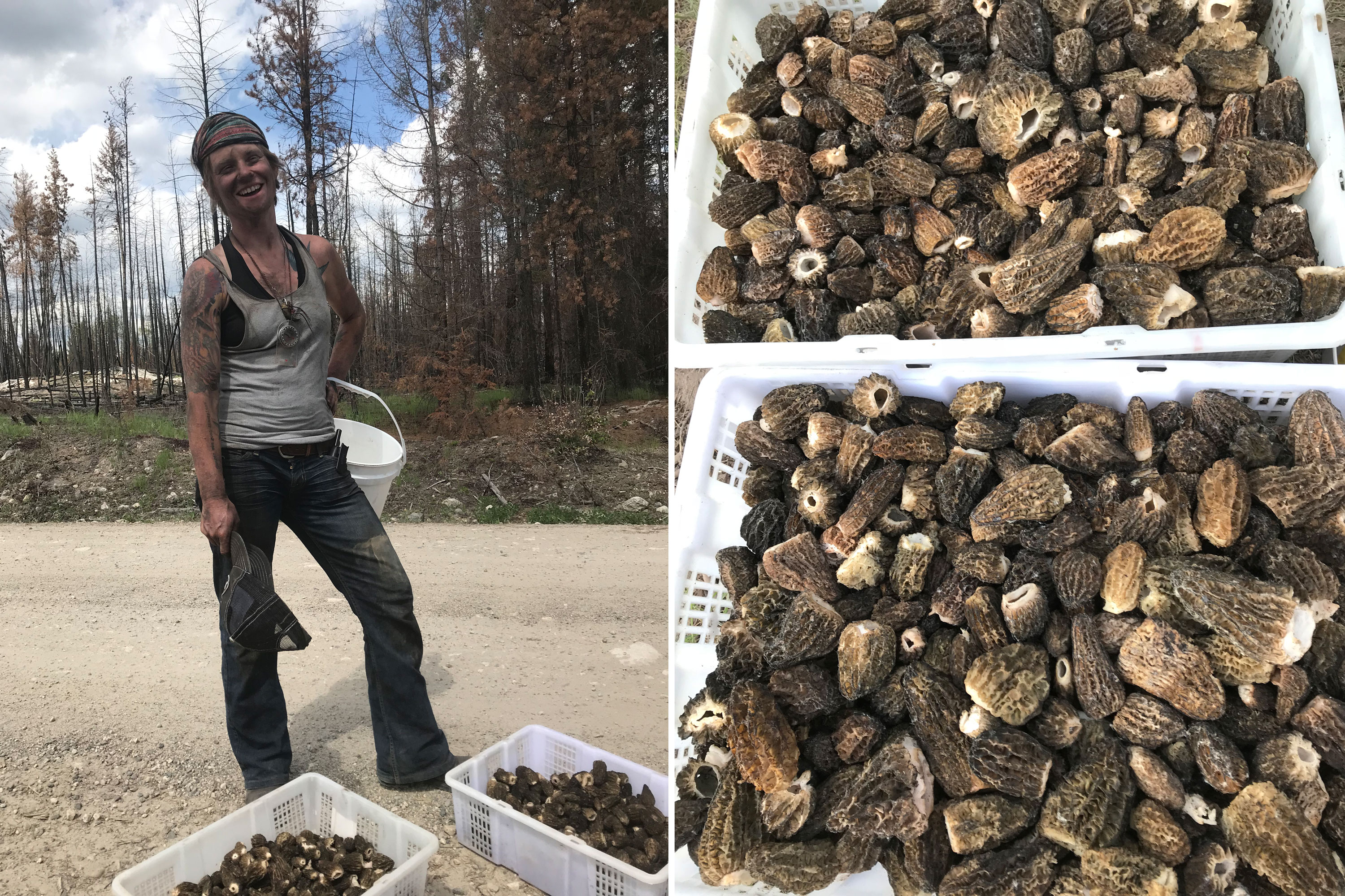
A mushroom picker and her pick. Photo courtesy of the author
Protected Predator
Lindsay Tatteral, 27, tree planter and midwifery student
I’ve been tree planting for seven years, and sexual harassment is definitely a systemic issue. One of the biggest things that came was with a camp I had worked at for four years, since the very beginning of my career. There was a guy there who had a big alcohol problem and was known to be a predator. He was a checker, so he was technically management.
Almost all the women there had a run-in with him. I had an incident with him myself where he inappropriately touched me while he was drunk. I didn’t report it because I was a young planter and he was management. I felt like it was my bad for being too close to him.
One time he showed up drunk at an event and was sent to sleep in a hotel room with a female planter to sleep it off. He slept in her bed and tried to sleep with her; she was really uncomfortable. Afterward, no one seemed to know why he was assigned to a female planter’s room in the first place; she hadn’t given her consent for him to be there.
The foreman of the camp knew—everybody knew. When you’re out there, you’re not just working with people, you’re living with people; he was part of our community, and here we look out for members of our community. We kept wondering how we could deal with him. We tried talking to him about it and he was always remorseful and apologetic about it but he never changed; that’s part of the cycle of an abuser, right? He stopped drinking for a while and it got better, and then he got hurt and was off for a while and started drinking again and went back to doing the same thing. So for the first four years in camp, he was just something you tried to avoid but was normal.
We protect predators a lot in these instances. These are people who are hurting people but can talk about feminist theory.
Eventually, we had a new girl join our crew and he tried something with her—he said something to her, it was really innocent compared to the other things he had done. And she was like “Woah, this is not OK, you don’t get to speak to me that way.” It was like a light switch flicking on—we suddenly realized this was something we shouldn’t be accepting.
We went to the supervisor, who was a really good friend of this guy—he was great, really amazing, he organized a healing circle for the women to talk through their experiences. He also took responsibility for being complicit in it too because he knew, as everyone did, the way his friend and colleague was acting when he was drunk. Still, if he knew, why didn’t he do something about it? That’s the big question, isn’t it? He’s a friend now, but it’s still uncomfortable to talk about it with him.
The guy was fired and he didn’t understand why. He was completely in denial about his behavior. He went to work for another company and people thought he had just quit. They didn’t know he had been fired. It was all informal. I remember being so angry when I found out people thought he had just quit. I made sure people knew he was fired for sexual assault.
That’s 100 percent not an isolated incident. It’s just one story of many.
‘Weird daddy-daughter shit’
Amy Kenny, 37, writer and camp cook
I was working for a season as a camp cook for a fly-in outfitter near Mayo, Yukon. So, so many shitty things happened while I was out there but the shittiest thing that happened was toward the end of the season. Like, if I had written this into a short story, an editor would have looked at it and cut it out and said: "This is just too much."
So, it was—literally—a dark and stormy night; there was this terrible thunderstorm and it was super dark. All the guides and hunters were out at the splinter camps (these are camps away from the main camp where the guides take their clients) and so it was just me, the owner, and the owner’s daughter, who was like 28 or 29. We had been having a really great night—I’d cooked a really nice meal and they were telling me stories and laughing. They had a really weird, tense relationship sometimes, some really weird daddy-daughter shit, which was sometimes uncomfortable because when they fought I often had to be the go-between.
Just as everyone was about to go to bed, the daughter got a call on the satellite phone from one of the guides that a saddle had been forgotten for one of the horses (they ride in to the backcountry to hunt) and the client needed it, so the father was going to have to fly out and deliver it in the morning.
The father totally flips out—in his mind it was his daughter's fault although she really had nothing to do with it, she was just delivering the message—and the next thing I know they’re both just screaming at each other. He dragged her outside the cabin into the pouring rain and thunder; I could hear them fighting with each other. He called her a whore and smacked her right in the face. I didn’t see him hit her but I saw him throw her hard into a wall and she had a hand mark on her face when they came back in.
Over the next few days, they didn’t talk and things were really uncomfortable. She would talk to me about it sometimes; this wasn’t the first time this had happened apparently. She decided she was going to leave, but afterward, she changed her mind and stayed.
Later, the father took me aside and tried to apologize to me for the scene. He said his daughter was really manipulative, that she was unstable and I didn’t know what she was like; he really tried to blame everything on her.
He adamantly denied that he had been abusive to her in any way. I absolutely would not accept that. I said, “We’re the only three people up here—what do you think I’m going to do, just be OK with you beating women? This isn’t alright.” He just kept denying it and denying it until he finally admitted that yes, he had hit his daughter. It was fucked. I mean, I know people who are abusers lie about their abuse, but he did this right in front of me.
A few days later the father and the daughter made up, really suddenly. I know that’s part of it, the cycle of abuse, but it was super disturbing, they were talking cute at each other and acting really close. Suddenly, both of them were against me, not really talking to me. A little while later the father came to me and told me they weren’t going to need me for the rest of the season—it was almost over and it was just a small hunt they said, so they really weren’t going to need a cook. I told him I knew why he was really firing me because I had said what I had about him hitting his daughter. He told me I could think whatever I liked.
‘We always felt we were being looked at, being ranked’
Ren Roberts, 27, tree planter and student of Indigenous community planning
I’ve been a tree planter for seven years, six of which I spent with the same tree planting company. It was supposed to be pretty progressive, and a lot of people told me I was really lucky to be hired there as a rookie planter. Most people have to start out in the rookie factories. One of the things that this company did was try to create a gender-balance on the crews, which you would think would be good, as a woman.
A big problem was that there weren’t many female supervisors, and management really didn’t like it when women stated their opinions. At one point, a manager even called a meeting and got really upset with the crew because one of the female members had said he was “mansplaining” to her and he felt that complaint was inappropriate.
There was definitely a culture of sex at this company. One friend called it “a heteronormative monogamous cesspool.” One of the big things was the “top five.” Everyone was always asking you who your “top five” were—the top five were who you wanted to sleep with the most. We always felt we were being looked at, being ranked. I always felt leered at, like there were predatory eyes on me.
There was a hot tub on site for us to use at the end of the day and while that should have been amazing—you’re hot and dirty and your muscles are tired after a long day of picking—it was really an invitation to bad behavior. One guy was really gross about it, and would say things like how he loved it when women had to get into the hot tub because they had to spread their legs to do it. It was bad enough that some women were advocating not to have the hot tub available every night, because the space didn’t feel safe.
Overall though, tree planting has been incredibly empowering for me. Growing up as a woman in the city, tree planting was the first time I ever felt financially powerful independent of my sexuality. It gives you physical strength, you feel good in your body; just being out in the forest, in the wild, is empowering. I’m at a different company now called Hybrid 17 and they’re awesome. It’s a really inclusive, genderqueer space. It’s all about the culture that’s created in the camp.
‘I feel like I’m hunted’
Mya Halbgebauer, 21, tree planter and arts student
I’ve been a tree planter for three years, working in both British Columbia and Alberta. There’s so many men in power in tree planting camps, it’s really male-dominated and that really changes the way I feel about myself and other women while I’m there. I feel like I have to look out for other women, especially after what happened in my second year.
I got a little too drunk one night at a party on a night off and I got taken advantage of. He took me back to his tent and I definitely didn’t consent to anything that happened that night. Afterward, I had to find my way back to my own tent alone in the dark. My body was violated without my consent and that’s not OK.
I never said anything to him after that—I kind of just avoided him. I had to spend the rest of the next month working with him. It was really uncomfortable. He works somewhere else now but I have seen him briefly, recently. I didn’t report it.
The gender divide is really intense in these camps. Everyone is always asking who’s single, and there’s always fewer women than men. I feel like I’m hunted because I’m female and that feels unsafe.
‘I’ve developed a thick skin’
Alida Thomas, 30, hunting guide and bushworker
I haven’t personally had many problems in the industry, but I’ve developed a thick skin and have worked in the hunting, guide, forestry, geology, mushroom picking, and even pipelining industries since I was 16. I have a pretty quick ‘here are my boundaries’ when I start any new job and that’s that usually. Plus, to be honest, there are a lot of awesome men in these industries who don’t stand for sexism. Or that’s my experience at least.
However, last summer there were two girls who I worked with on a geo crew who definitely had a hell of a time not just with sexism but verbal sexual abuse as well, I would say. I helped one and she navigated it for the season and then quit after because it was that bad and one just left. I understand why, as their bosses were ridiculous and this girl was new in the industry, just out of school. She shouldn't have had to battle that level that fast. I was on a different crew but we worked closely with her. The driller I worked with and I helped straighten out one of the bosses as much as possible, but even then she endured some physical harassment and when she quit at the end of the year they told her you just have to get used to it in this industry, which no, you don’t.
These industries aren’t as bad as when I started though. I would say, based on stories I’ve heard, that sexual harassment has gone up but sexism has gone down for sure. When I started as an assistant guide for horseback hunting they paid me half of what they paid the guys to start. Now, it’s a little smoother for women getting in.
Sign up for our newsletter to get the best of VICE delivered to your inbox daily.
Follow Lori Fox on Twitter.
from VICE US https://ift.tt/2qlocRb
via
cheap web hosting
